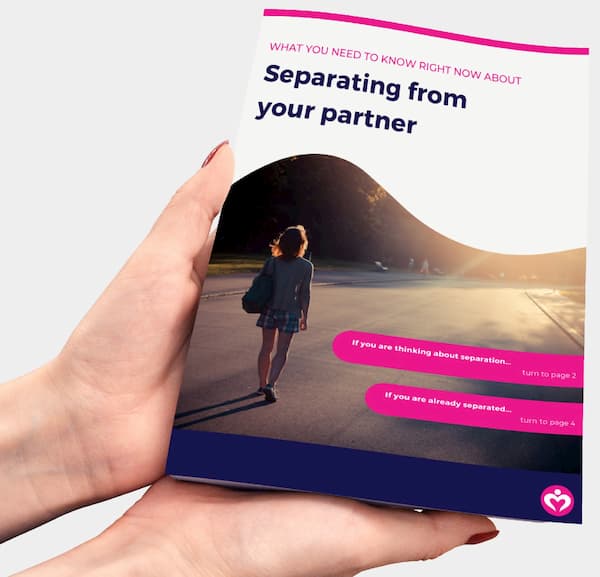Ending a marriage is never easy, but the process doesn’t have to be messy or drawn out. In Queensland, many couples choose to file a joint divorce application when they agree the relationship is over and want a straightforward path forward.
With the court system streamlined under the Federal Circuit and Family Court of Australia, applying jointly can help avoid unnecessary conflict and simplify the process. For many, it’s the most practical and respectful way to close one chapter and begin another.
Please note: this is general information only and not legal advice — please contact VM Family Law for accurate, tailored advice. Our full contact details can be found here: https://www.vmfamilylaw.com.au/contact/
What Is a Joint Divorce Application?
A joint divorce application is when both spouses apply together to legally end their marriage. It confirms in writing that the marriage has broken down irretrievably and that the couple has been separated for at least 12 months.
In Queensland, divorce applications are handled by the Federal Circuit and Family Court of Australia. Unlike a sole application, where one person applies and serves the other, a joint application is made together — both parties sign the same form and share responsibility for the process.
This option suits couples who:
Agree that the marriage has ended.
Can cooperate and communicate respectfully.
Wish to avoid unnecessary stress or court appearances.
Why Choose a Joint Application?
Filing jointly offers several advantages, both personal and practical:
Personal Benefits
Reduced emotional stress.
Shared responsibility for paperwork and fees.
No unexpected legal notices or service issues.
Procedural Benefits
Generally no court attendance required.
Faster processing times.
Lower likelihood of disputes or delays.
Who Can File a Joint Divorce Application?
To be eligible to file a joint divorce in Queensland, you and your spouse must meet the following conditions:
You are legally married, either in Australia or overseas, and the marriage is recognised under Australian law.
You have been separated for at least 12 continuous months and there is no reasonable likelihood of reconciliation.
Either spouse is an Australian citizen, lives in Australia and considers it their home, or has lived in Australia for at least 12 months before applying.
If you have children under 18, proper arrangements for their care, welfare, and development have been made.
The Process for Filing a Joint Divorce Application
Step 1: Confirm Separation
You must have been separated for at least 12 months. This can include living separately under the same roof if you can show evidence that your lives were separate.
Step 2: Gather Required Documents
You’ll need your official marriage certificate and proof of citizenship or residency. If documents are in another language, a certified translation and affidavit will be required.
Step 3: Complete the Online Application
Both spouses complete and sign the Application for Divorce form available through the Commonwealth Courts Portal. The information provided must be accurate and complete.
Step 4: Pay the Filing Fee
There is a court filing fee for divorce applications. Fee reductions may apply if you hold certain government concession cards or can demonstrate financial hardship.
Step 5: Court Review and Hearing
In most joint applications, you do not need to attend court. A registrar reviews the documents to ensure all legal requirements are met, especially regarding arrangements for children.
Step 6: Divorce Finalisation
If granted, the divorce order becomes final one month and one day after the court makes the order. You will then be legally divorced and can download the order from the online portal.
Important Notes
A divorce order legally ends the marriage but does not settle other issues such as:
Property and asset division
Spousal maintenance
Parenting arrangements
These matters require separate legal steps, which can be handled alongside or after the divorce with advice from a qualified family lawyer.
Frequently Asked Questions (FAQs)
Do we both need to agree?
Yes. A joint application requires both parties to consent and sign the form. If one spouse no longer agrees, a sole application can still proceed.
Do we have to go to court?
Not usually. Most joint applications are finalised without a court appearance unless there are questions about children or documents.
Can we share the filing fee?
Yes. The payment arrangement is up to you both — one person can pay, or you can split the cost.
Is everything automatically divided 50/50?
No. Property and financial settlements are separate legal processes. The court decides what is fair and reasonable based on contributions and future needs, not equal division.
What if we separated but lived in the same house?
This is called “separation under one roof.” You may still qualify if you can show your relationship ended despite living together — for example, by maintaining separate finances and lives.
Final Thoughts
When both parties agree to end the marriage, a joint divorce application is often the most straightforward and respectful way forward. It helps reduce emotional strain, avoids unnecessary delays, and ensures both people remain in control of the process.
If you need help preparing your joint application or want legal guidance about parenting or property matters, VM Family Law’s experienced Queensland family lawyers are here to help. Call 07 3447 8966 or visit vmfamilylaw.com.au for a confidential consultation.
Official Information Sources
Queensland Law Handbook – Divorce Application (Family Law):
https://queenslandlawhandbook.org.au/the-queensland-law-handbook/family-law/marriage-and-divorce/divorce-application/Legal Aid Queensland – Divorce:
https://www.legalaid.qld.gov.au/Find-legal-information/Relationships-and-children/Relationships/DivorceFederal Circuit and Family Court of Australia – Divorce and Separation Information:
https://www.fcfcoa.gov.au/fl/divorce/applyQueensland Government – Families and Legal Relationships:
https://www.qld.gov.au/families/legalQueensland Law Society – Family Law and Legal Assistance Resources:
https://www.qls.com.au/

